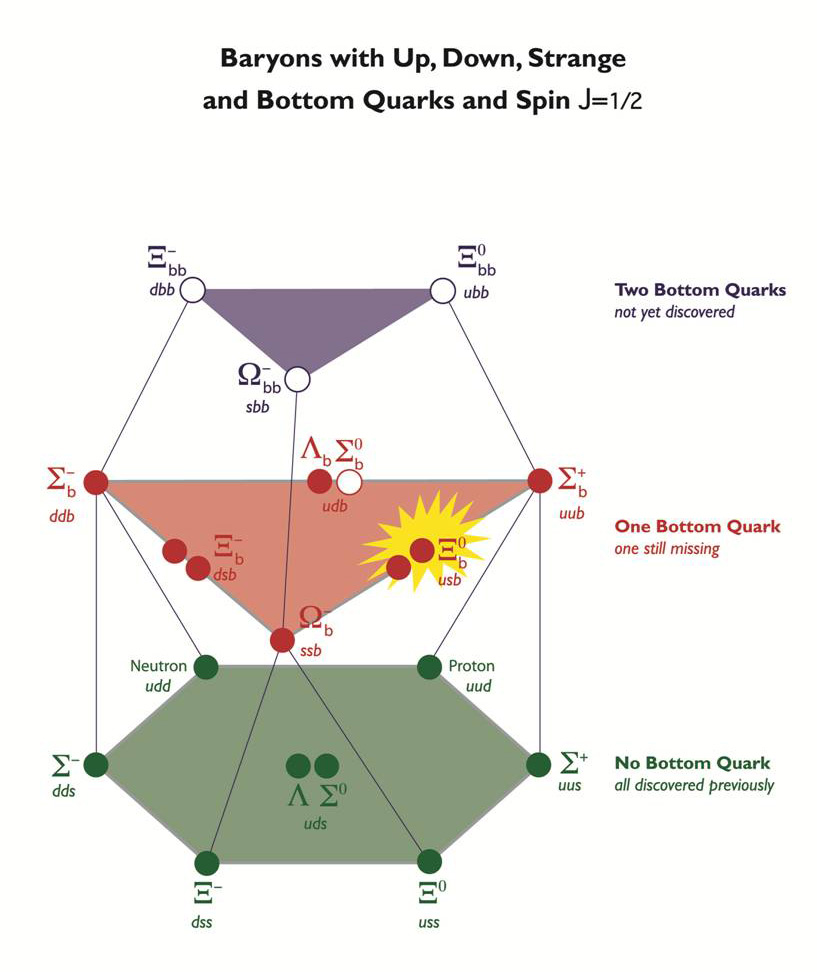Another day, another particle, courtesy of scientists at Fermilab. The CDF group working with data from Fermilab’s Tevatron particle collider announced the finding of a new, neutron-like particle last week. The particle known as a neutral Xi-sub-b is a heavy relative of the neutron and is made up of a strange quark, an up quark and a bottom quark, hence the “s-u-b” moniker.

[div class=attrib]Here’s more from Symmetry Breaking:[end-div]
While its existence was predicted by the Standard Model, the observation of the neutral Xi-sub-b is significant because it strengthens our understanding of how quarks form matter. Fermilab physicist Pat Lukens, a member of the CDF collaboration, presented the discovery at Fermilab on Wednesday, July 20.
The neutral Xi-sub-b is the latest entry in the periodic table of baryons. Baryons are particles formed of three quarks, the most common examples being the proton (two up quarks and a down quark) and the neutron (two down quarks and an up quark). The neutral Xi-sub-b belongs to the family of bottom baryons, which are about six times heavier than the proton and neutron because they all contain a heavy bottom quark. The particles are produced only in high-energy collisions, and are rare and very difficult to observe.
Although Fermilab’s Tevatron particle collider is not a dedicated bottom quark factory, sophisticated particle detectors and trillions of proton-antiproton collisions have made it a haven for discovering and studying almost all of the known bottom baryons. Experiments at the Tevatron discovered the Sigma-sub-b baryons (?b and ?b*) in 2006, observed the Xi-b-minus baryon (?b–) in 2007, and found the Omega-sub-b (?b–) in 2009.
[div class=attrib]Image courtesy of Fermilab/CDF Collaboration.[end-div]
